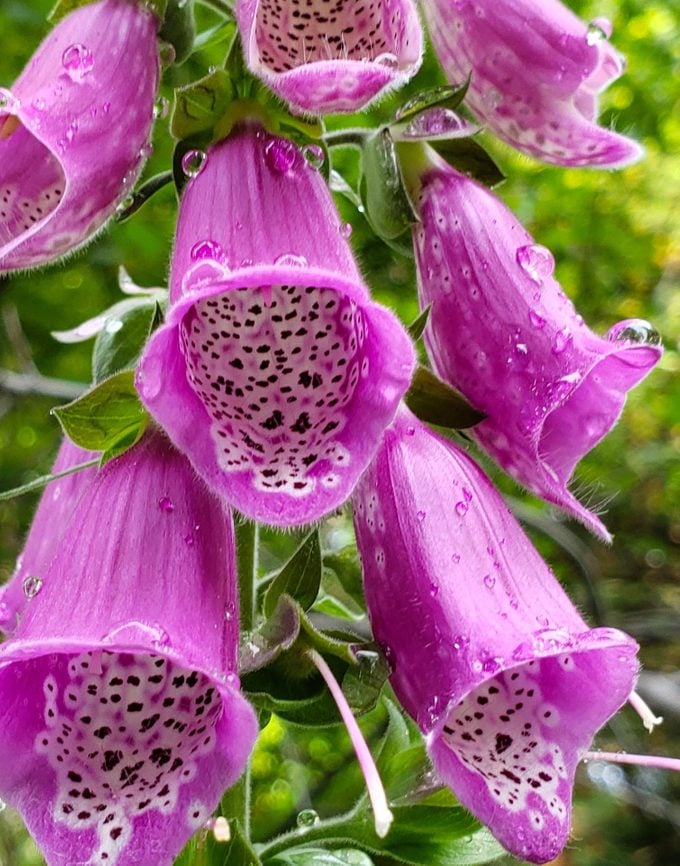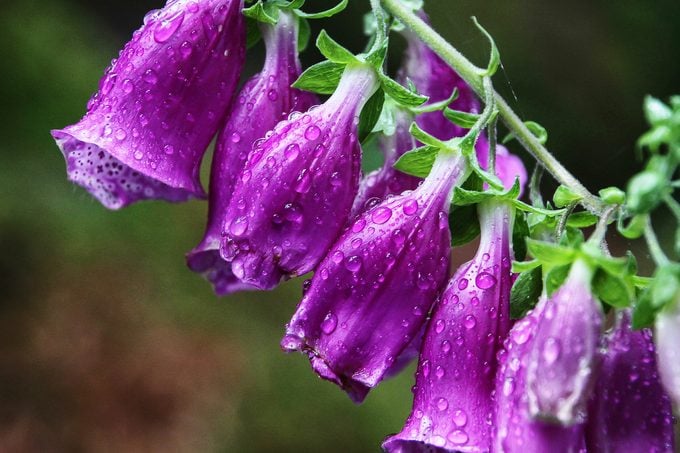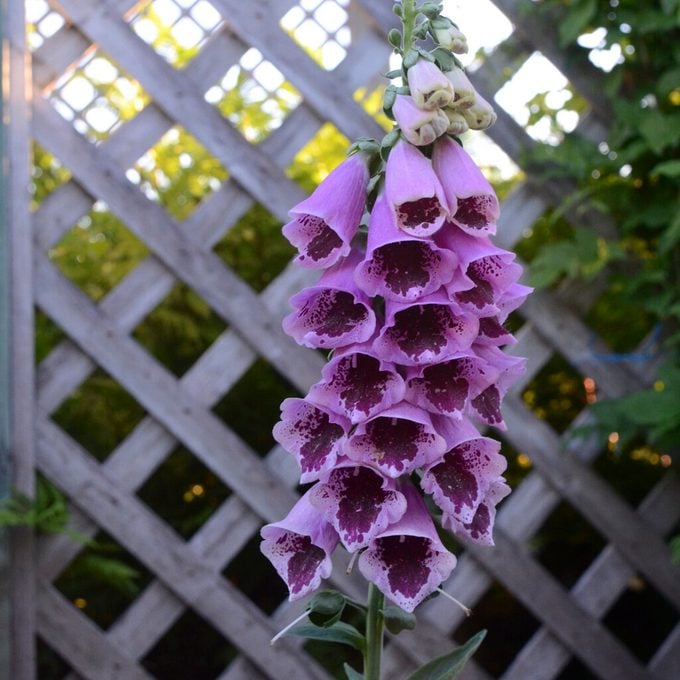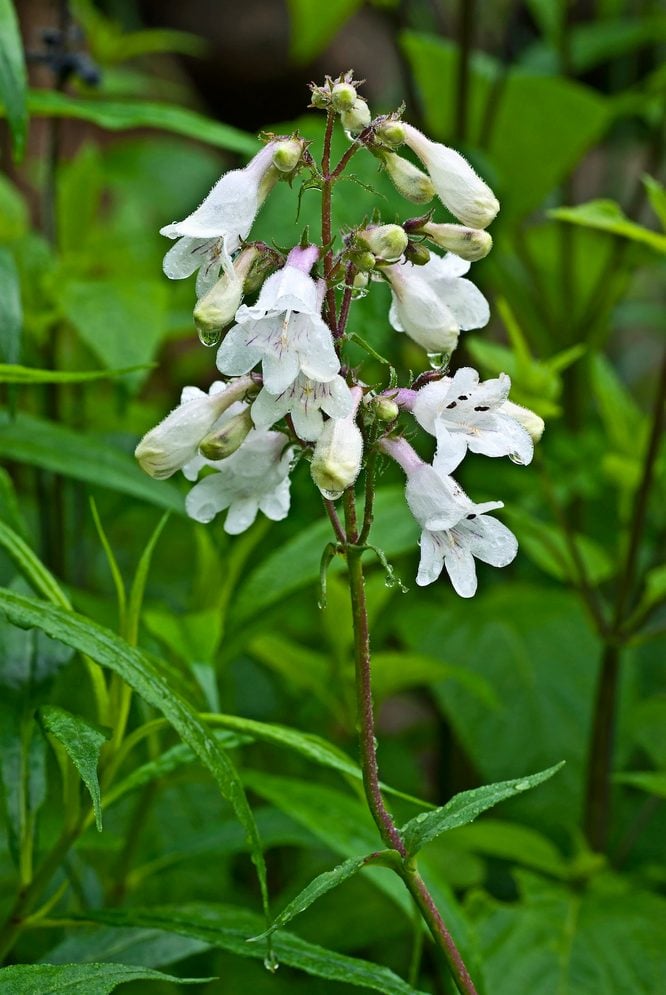How to Grow Common Foxglove (Digitalis) Plants
Updated: Apr. 10, 2024
If you decide to bring common foxglove into your backyard garden, there are a few things to keep in mind.
On This Page
Common Foxglove Plant Care Tips

- Common name: Common foxglove
- Scientific name: Digitalis purpurea
- Hardiness zones: Zones 4 to 9
- Light needs: Full sun to part shade
- Water needs: Does best with regular watering and moist well-draining soil
- Size: 1 to 3 feet high
- Attracts: hummingbirds, bees and butterflies
If you’ve ever seen this plant’s otherwordly stalks of tubular purple flowers, you can probably get a sense of why it’s earned a few fairy-tale nicknames, from fairy fingers and ladies’ thimble to fairy bells. Its scientific name, Digitalis purpurea, literally means ‘purple fingers.’
Are Foxglove Plants Invasive?
Common foxglove isn’t native to the U.S. and was brought here from western European countries where it’s still a popular choice in gardens across the United Kingdom. Depending on where you live, it could be a lovely addition to your own garden, as well.
Allen Pyle, a horticulture expert and outreach specialist at the University of Wisconsin-Madison’s Division of Extension, says, “Its large flowers are very showy, make interesting cut flowers, and are attractive to hummingbirds and bumble bees.”
Before you decide to introduce it to your garden, do a little homework first and make sure it won’t wreak havoc on native plants. Allen says, “Digitalis is considered invasive in some mild climate areas including California and Oregon due to potential for reseeding. I haven’t found it an overly aggressive reseeder in the Midwest, however, and cutting flowering stems off after flowers fade and before seed is produced will prevent reseeding.”
If it is not invasive in your area you may decide to allow it to reseed to keep foxglove plants returning to your garden each year.
Discover surprising flowers you never knew are invasive.
When and How to Plant Foxglove

You’ll find some foxgloves that are perennials and bloom every year of their lifespans, but for the most part, this plant is a biennial and blooms once over two years. That means if you start from seed, it will establish its root system and produce leaves in its first spring, then bloom in its second. Its second year is also when it will attempt to reseed for future seasons.
Allen’s advice for continuous blooms? “Planting Digitalis yearly for several years will ensure that some plants are blooming each year,” he says.
It’s easy to start directly from seed instead of buying an already established plant. To start from seed, you can sow them indoors or directly into the ground. “I typically prefer to start Digitalis indoors in a soilless seed-starting medium,” Allen says. “I sow the seeds about nine to 12 weeks before the last expected spring frost.”
Whichever approach you take, it’s important to remember that light is required for the seeds to germinate, so you don’t want to cover the seeds up with soil. Also be sure to keep soil moist.
Check out the top 10 bushes with pretty purple flowers.
Where to Plant Foxglove

What makes this plant so captivating is not just its vibrant color but also how tall it can grow. Take full advantage of its height and use it in the backs of mixed borders to add visual structure.
You can also plant it in containers — it makes a great thriller centerpiece. Most varieties will grow well in containers, but there are some dwarf varieties available that make it even easier like Dalmatian Peach. Although he says he personally prefers growing this plant in garden beds, for containers, Allen suggests choosing varieties that will flower in their first year, such as the Camelot series or Foxy foxglove. That way, you’ll get major visual impact sooner in its growth cycle.
Native Plant Alternatives

If you’d rather stick to native plants in your garden but still want something reminiscent of Digitalis purpurea, you can try foxglove beardtongue (Penstemon digitalis). Although not the same as foxglove, it reaches similar heights and shares the same growing conditions. It’s a magnet for important pollinators, like bumblebees.
Does Foxglove Attract Hummingbirds?
Hummingbirds and other pollinators like bees and butterflies love the eye-popping colors. The tubular blossoms are an especially ideal flower shape for hummingbirds to drink out of because of their long, curved bills. You can attract hummingbirds with any color of foxglove.
Are Foxglove Plants Poisonous?
Yes, all parts of the plant (flower, stem, seeds, etc.) are poisonous to humans and curious pets when eaten. The Digitalis part of its scientific name (Digitalis purpurea) is also the name of a once-common heart stimulant medication which gets its key ingredient from the plant.
Side-effects of consuming it include nausea and headache at the mildest and potentially fatal heart problems at the worst. Allen advises, “Gardeners with small children or pets may want to avoid planting Digitalis altogether.”
The upside, however, is that its toxicity is what makes it rabbit- and deer-resistant. (Just don’t use it to brew your tea!)
About the Expert
Allen Pyle is a horticulture expert and outreach specialist at University of Wisconsin-Madison’s Division of Extension. He earned a bachelor of science in horticulture and a master of science in entomology, both from Michigan State University.
Sources
- Walters Gardens
- Cornell University College of Agriculture and Life Sciences
Why Trust Us
For nearly 30 years, Birds & Blooms, a Trusted Media Brand, has been inspiring readers to have a lifelong love of birding, gardening and nature. We are the #1 bird and garden magazine in North America and a trusted online resource for over 15 million outdoor enthusiasts annually. Our library of thousands of informative articles and how-tos has been written by trusted journalists and fact-checked by bird and garden experts for accuracy. In addition to our staff of experienced gardeners and bird-watchers, we hire individuals who have years of education and hands-on experience with birding, bird feeding, gardening, butterflies, bugs and more. Learn more about Birds & Blooms, our field editor program, and our submission guidelines.




















